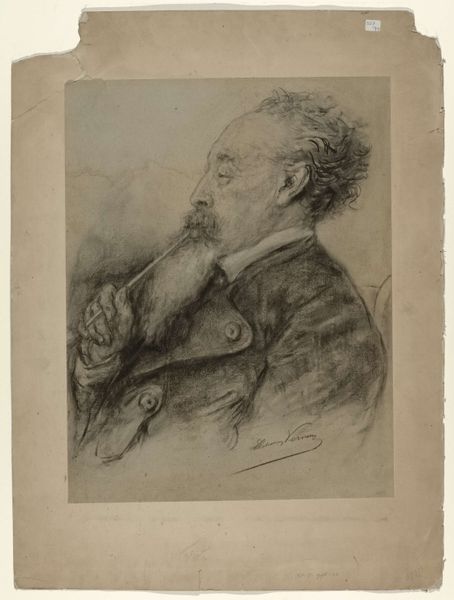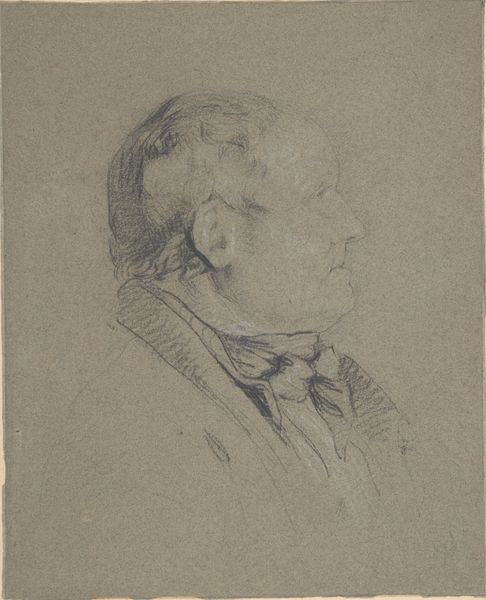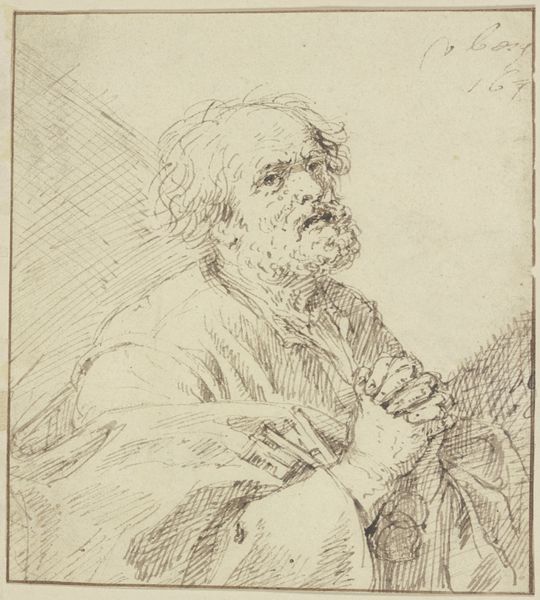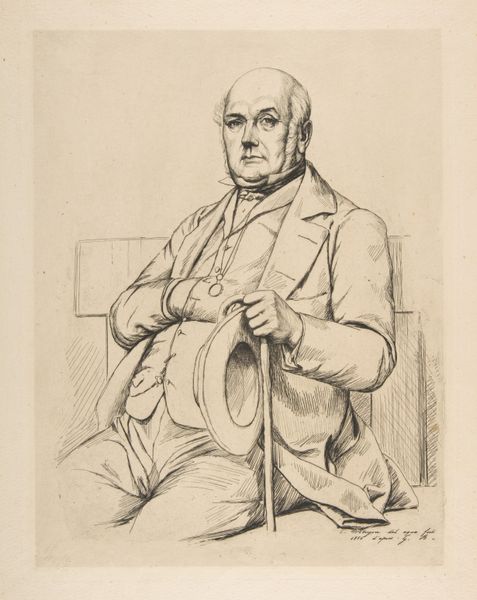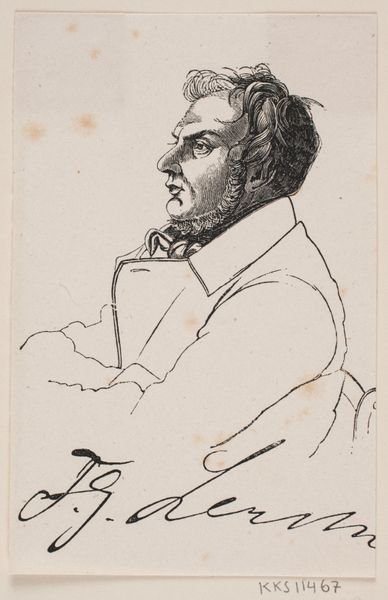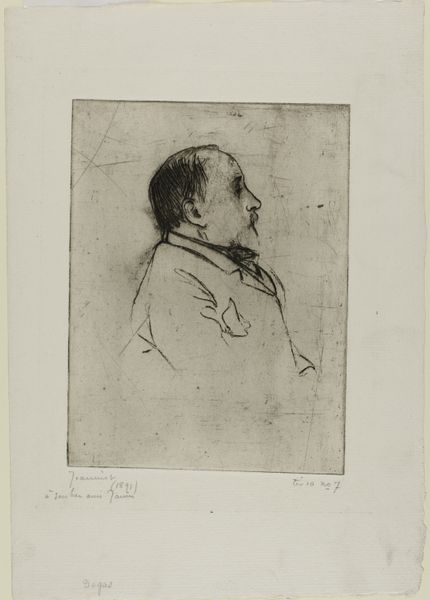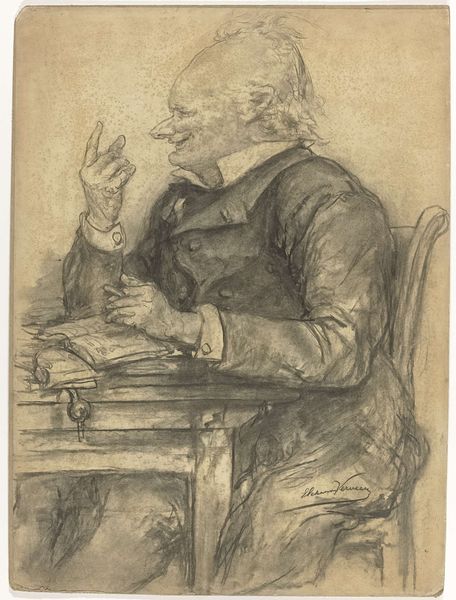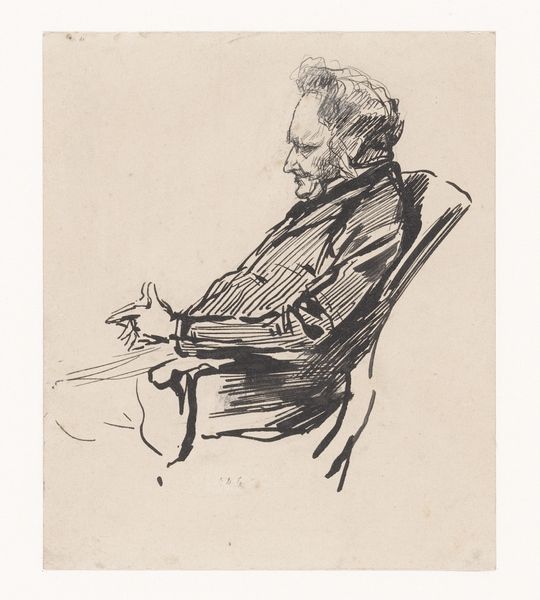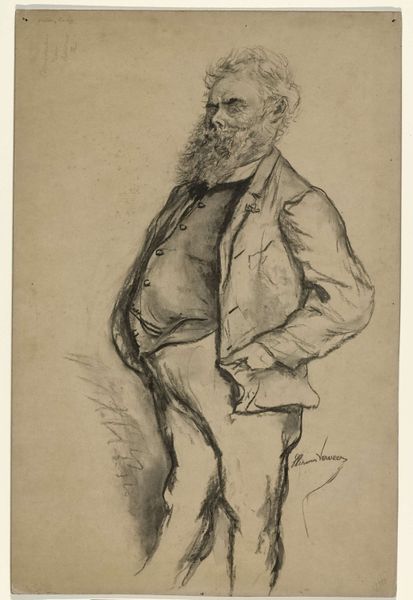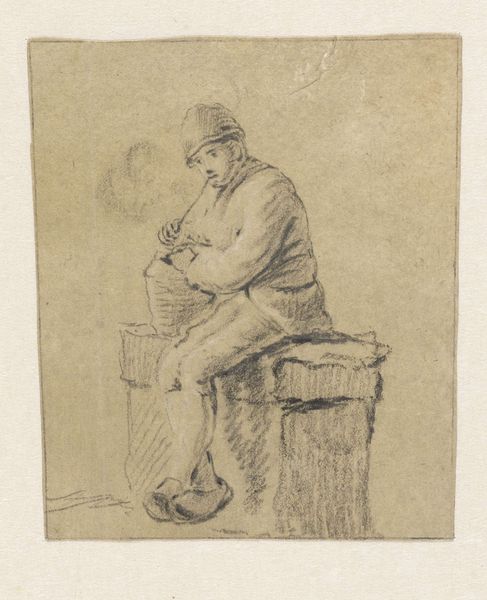
Karikatuurportret van de kunstschilder Martinus Wilhelmus Liernur 1850 - 1899
0:00
0:00
drawing, pencil
#
portrait
#
pencil drawn
#
drawing
#
caricature
#
pencil drawing
#
pencil
#
portrait drawing
#
academic-art
Dimensions: height 518 mm, width 452 mm
Copyright: Rijks Museum: Open Domain
Curator: Immediately, the sketchiness lends itself to the caricature—the soft, grey tones enhancing the humorous effect. It almost feels incomplete, as if the artist was capturing a fleeting impression. Editor: Indeed, let's explore Elchanon Verveer's "Caricature Portrait of the Painter Martinus Wilhelmus Liernur", sometime between 1850 and 1899. It is now held at the Rijksmuseum. And yes, there's something immediately striking about the composition. It is dominated by Liernur's corpulent figure and, of course, the extravagantly long pipe jutting out. Curator: From a formalist perspective, consider the lines! Verveer uses them sparingly but with such precision. Note how a few strokes define the folds of his jacket or the curve of his belly. It's economical, almost effortless. The asymmetry in how his weight is distributed—leaning heavily to one side—adds to the unstable, jovial tone. Editor: It tells a story about the art world, right? Caricatures often served as a way to satirize or poke fun at prominent figures, reflecting the social dynamics and power structures within artistic circles. A successful, established artist depicted with humor shows his social position—one of acknowledged mastery that allowed him to be lightly ridiculed. Curator: And what do you make of the medium, this subtle pencil on paper? It contributes to the sense of immediacy and informality, it really suits the subject. Verveer seems more concerned with capturing personality than with perfect anatomical accuracy. Editor: Right, unlike a more formal oil portrait that presents a carefully constructed image, this pencil drawing gives us something spontaneous. We also gain a more intimate peek into the art world of 19th century Netherlands—the cafes, the camaraderie, perhaps a subtle dig at a fellow painter. This might even have been a gift to the sitter himself. Curator: Agreed. Overall, Verveer's command is in extracting character and, even humor, using just the fundamental elements of art: tone, line, form. This gives an experience of an intriguing personality frozen for all time on paper. Editor: The portrait allows us to look into an artist’s character within their cultural milieu and its historical artistic moment. It displays, literally, the portrait of an epoch.
Comments
No comments
Be the first to comment and join the conversation on the ultimate creative platform.

